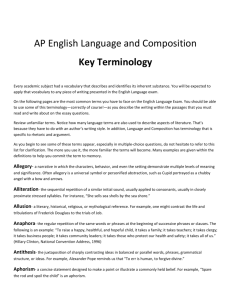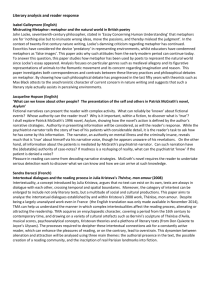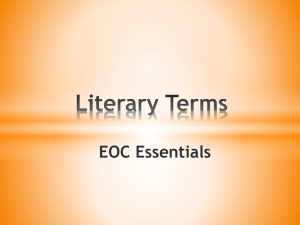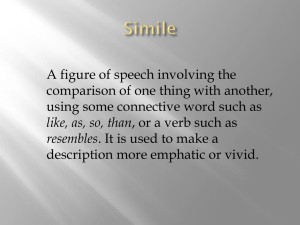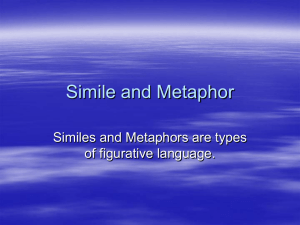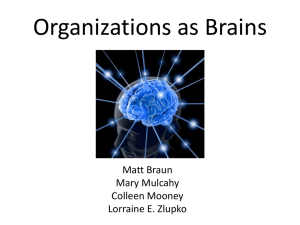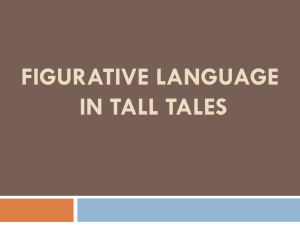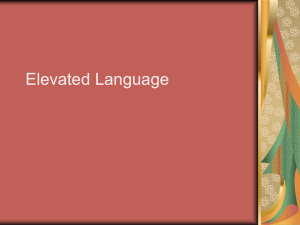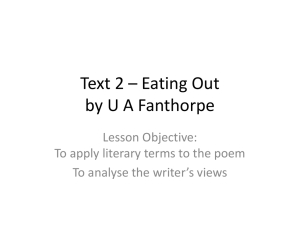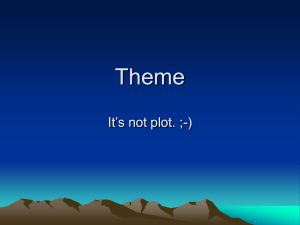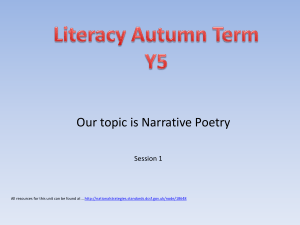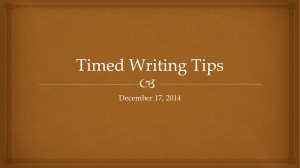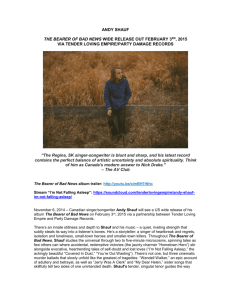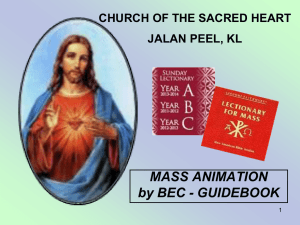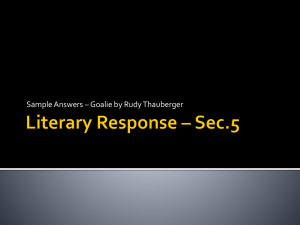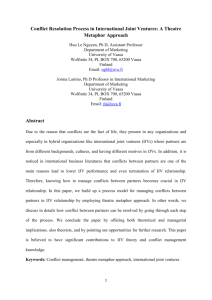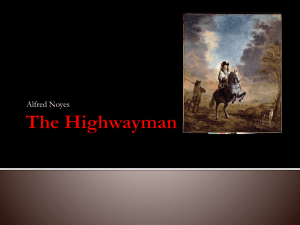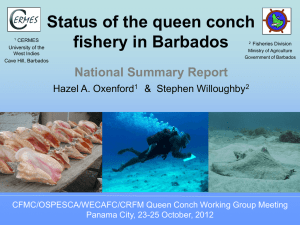Story Element Notes - Mr. Sebek, Room 213
advertisement
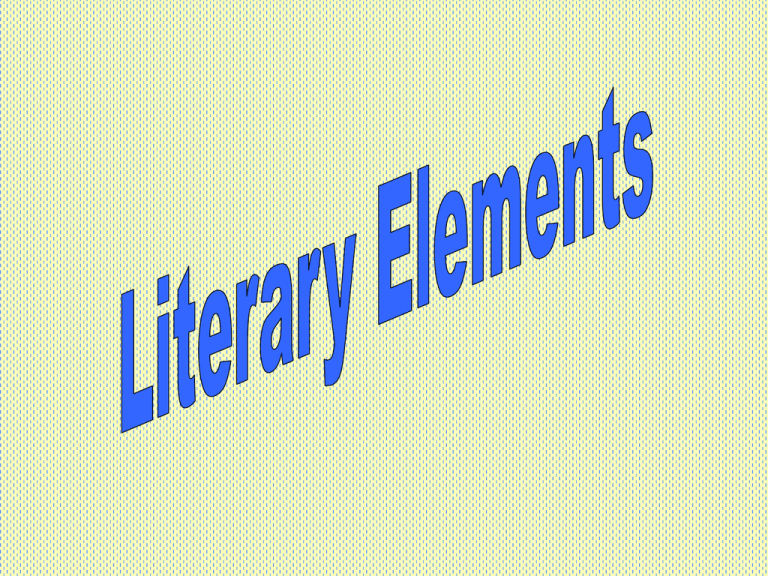
Mood • the feeling the writer creates for the readers • Moods may be suspenseful, sad, exciting or calm • The young boy sat upright in bed, sure that he had heard a sound in the hallway. He strained to listen more closely. Were those footsteps that he heard creeping towards his room? But how can that be…he was home alone tonight. He looked over at his door and noticed the doorknob begin to slowly turn in a clockwise direction. Whoever or whatever was in the hallway was about to come into his room! Tone • the writer’s attitude toward his/her subject • Tone can often be inferred by analyzing the writer’s choice of words and details. Foreshadowing • A hint about an event that will occur later in the story. • Often designed to build suspense and keep the reader guessing about the outcome of an event. • Example: “At the time, we had no idea that we would never see her again.” – Chapter Two of Downsiders hints at the causes of the Great Shaft Disaster which unfolds later in the story. Flashback • When the author takes the reader back in time to see an event that has already occurred. • Helps the reader understand a situation better. • Gives background information • Often occurs as a dream, daydreaming, or a character being “lost” in thought. Flashback • Turn to page 7 of The Conch Bearer • Skim and scan the page. Can you find the foreshadowing? Point of View (POV) • The way in which the author chooses to tell the story. • Four main points of view 4 Points of View • 1st person – the story is told by a character of the story using “I” speak. Think personal narratives! – (Examples: Twilight, Lightning Thief, La Linea, The Dream Bearer) • 2nd person – rarely used in fiction. Uses “You” speak. Most often seen in how-to or self help writing. (Example: How to get Organized without Losing It) 4 Points of View (cont.) • 3rd person limited – the story is told by a narrator who is not part of the story. The narrator follows ONE character through the story. – (Examples: Bar Code Tattoo, Stormbreaker, The Conch Bearer) • 3rd person omniscient – the story is told by a narrator who is not part of the story. This narrator can follow SEVERAL or ALL characters at the same time through the story. Usually uses different chapters to tell about different characters. – (Examples: Harry Potter, Ranger’s Apprentice, Artemis Fowl) Symbol • A person, place or object that stands for something else. • Often stand for something invisible like a feeling or idea • What is a common symbol for – Freedom - Love Hyperbole • An extreme exaggeration that emphasizes a point • It is not meant to be taken literally • Example: I am so hungry I could eat a horse! Appetite In a house the size of a postage stamp lived a man as big as a barge. His mouth could drink the entire river You could say it was rather large For dinner he would eat a trillion beans And a silo full of grain, Washed it down with a tanker of milk As if he were a drain. Personification • A type of metaphor in which human characteristics or feelings are given to an animal or object • Example: The young kitten jumped for joy! • Example: The grass whispers softly in the wind. The Cat & The Fiddle Hey diddle, diddle, The cat and the fiddle, The cow jumped over the moon; The little dog laughed To see such sport, And the dish ran away with the spoon. By Mother Goose Simile • A way of describing something using the words “like” or “as” in a comparison • Example: Her hair is as beautiful as a sunset. • Example: His eyes twinkled like stars in the sky. Flint An emerald is as green as grass, A ruby red as blood; A sapphire shines as blue as heaven; A flint lies in the mud. A diamond is a brilliant stone, To catch the world's desire; An opal holds a fiery spark; But a flint holds a fire. Christina Rossetti 1830-1894 Metaphor All the world's a stage, And all the men and women merely players, They have their exits and their entrances William Shakespeare Metaphor • A metaphor is a figure of speech that says that one thing is another different thing. This allows us to use fewer words and forces the reader or listener to find the similarities. The simplest form of metaphor is: "The [first thing] is a [second thing]." • Her home was a prison. The Highwayman by Alfred Noyes The wind was a torrent of darkness among the gusty trees, The moon was a ghostly galleon tossed upon cloudy seas, The road was a ribbon of moonlight over the purple moor, And the highwayman came riding-Riding--riding-The highwayman came riding, up to the old inn-door. Metaphor example Original sense of the word (example) The committee shot her ideas Anti-aircraft guns shoot down planes. down one by one. The private detective dug up enough evidence to convince the police to act. Dogs like to hide things. They bury bones and dig them up later. He broke into her conversation. Burglars break into buildings. The new movie was very popular. People flocked to see it. Birds flock together before they migrate. His head was spinning with ideas. Some computer hard drives spin at over 10,000 revolutions per minute. He was dressed rather vulgarly in a loud checked suit. I can't hear you because the radio is too loud. It wasn't long before their relationship turned sour. Sour food has an acid taste like lemon or vinegar Theme • The message or moral of the story. • This is what the author wants the reader to understand or come away from the story with. • It is often a message about life or human nature. • Themes are not single words – they are big ideas or sentences. • One story can have multiple themes. Conflict • Major or important problem of the story • Does not always have to be a bad thing • Stories have multiple conflicts. Internal vs. External Conflicts Internal Conflict Conflict that occurs inside the mind of a character An argument you have with yourself A difficult decision that has to be made Internal – inside – invisible-ish External Conflict Conflict that occurs outside of the mind External conflicts can be seen. A fist fight or argument with a friend A character battling against a flood 4 Types of Conflicts • Character vs. character – external • Character vs. nature – external • Character vs. society – external • Character vs. self – internal Be able to give and recognize examples of each.

